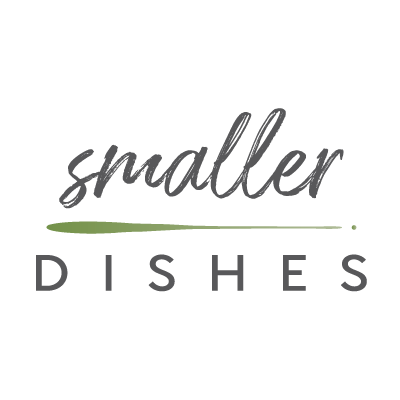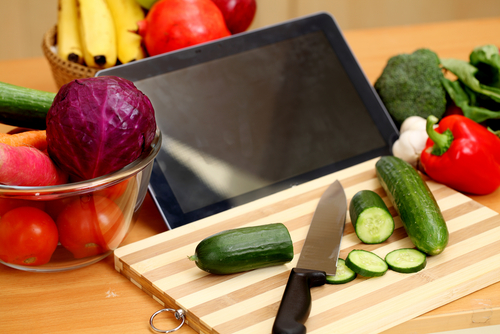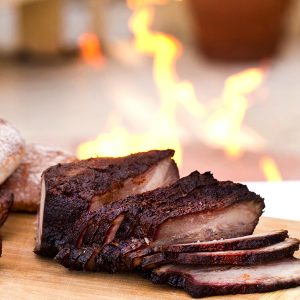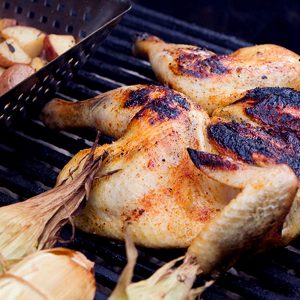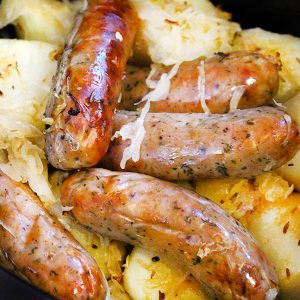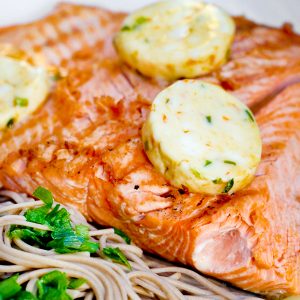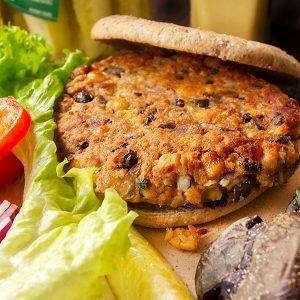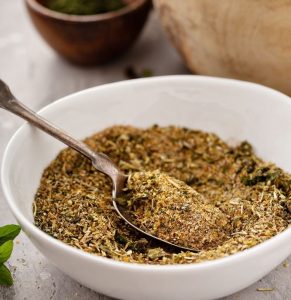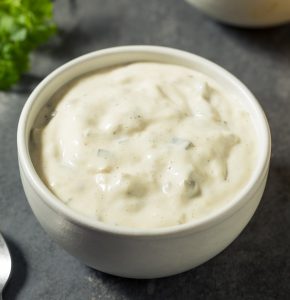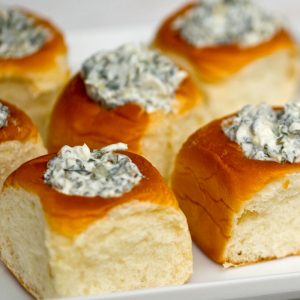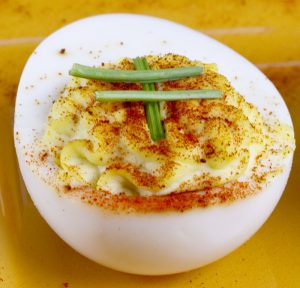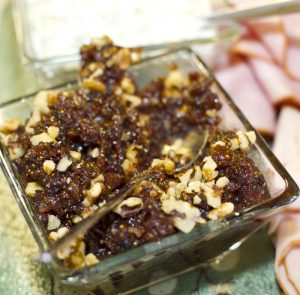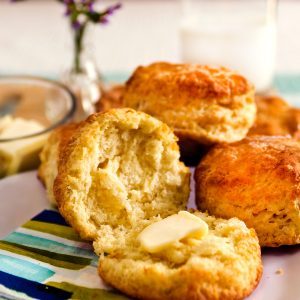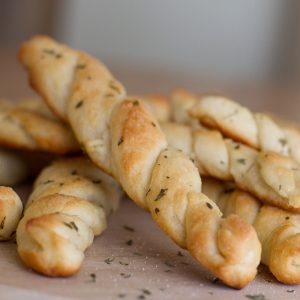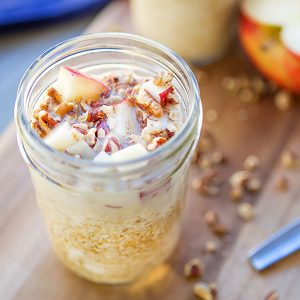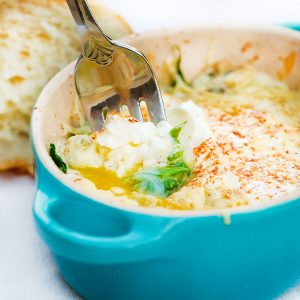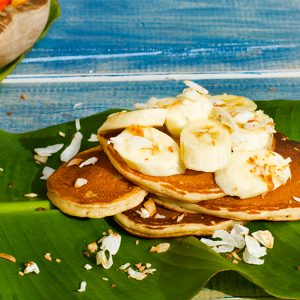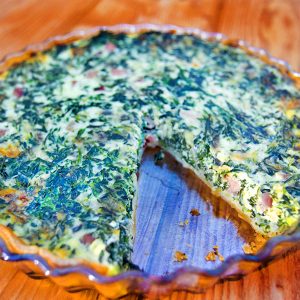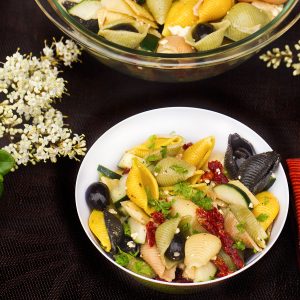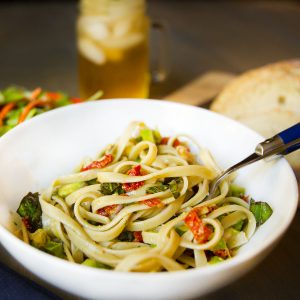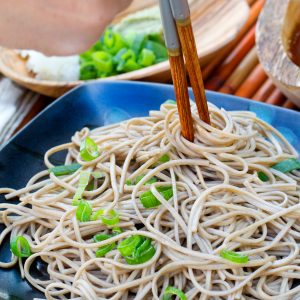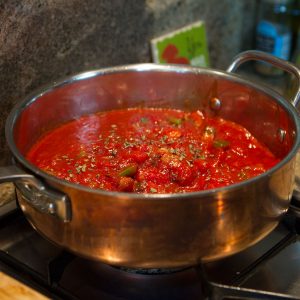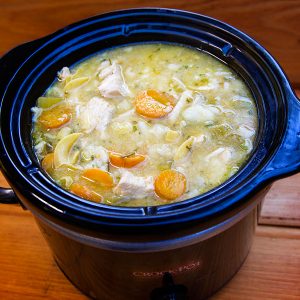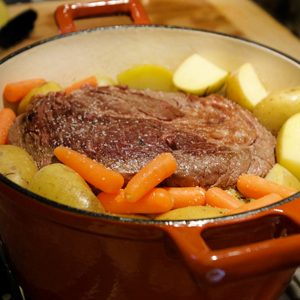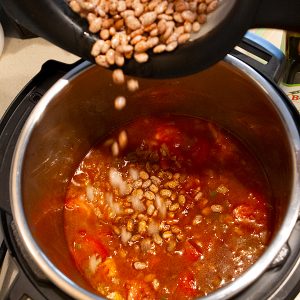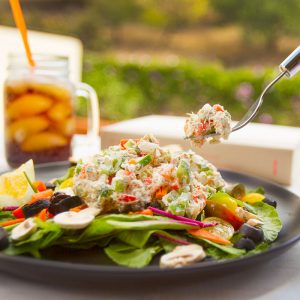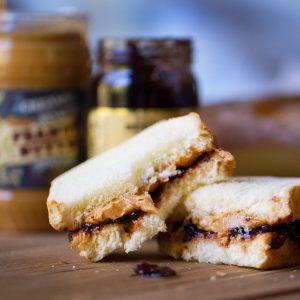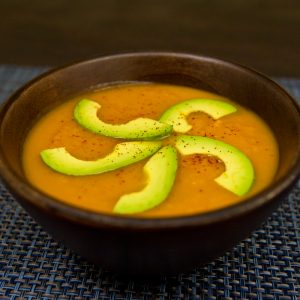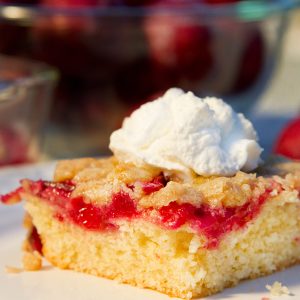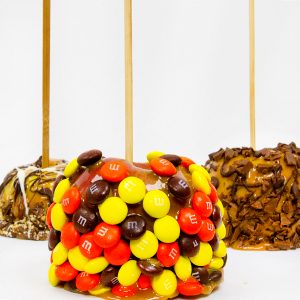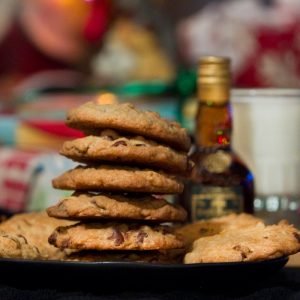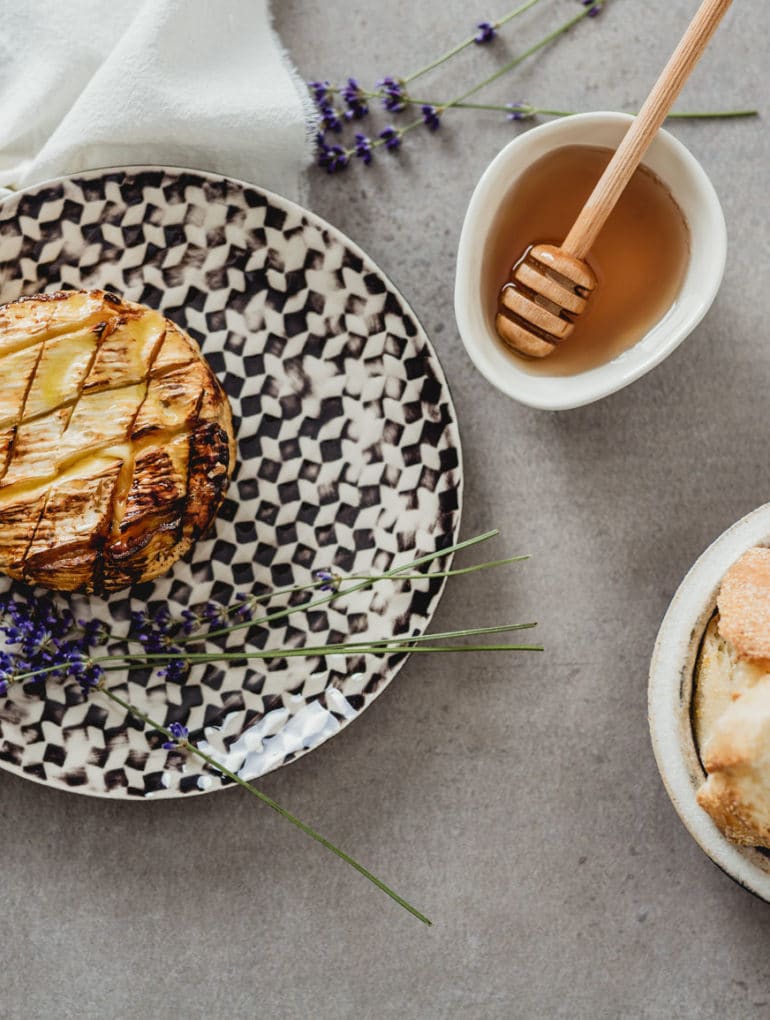*A Glossary of Common Cooking Terms
Adjust– To adjust a recipe means to taste or test before serving, adding seasoning if necessary. Remember, you can always add salt, but you can never take it away.
Aerate– A synonym for sift, the word aerate is often used in baking when sifting is used to incorporate air into the dry ingredients. Also see “sift.”
Al Dente– An Italian term meaning “to the bite,” or literally, “to the tooth.” This applies to foods cooked just enough to offer a slight resistance when bitten into, firm but not hard. This term is most commonly used to describe the ideal cooking point for pasta. The American Diabetes Association has found that pasta cooked al dente rates lower on the glycemic index (so less carbs) than fully cooked pasta. Test pasta for doneness 1-2 minutes before the end of the time listed on the box.
Al Forno– An Italian term for “baked” or “roasted.”
Bain Marie– Also known as a “water bath,” this refers to placing a container of food in a large, shallow pan of warm water, to surround the food with gentle, indirect heat. This technique can be used in the oven or on the stove for delicate dishes like sauces, custards, mousses, or for melting chocolate. It can also be used to keep food warm without overcooking or drying it out.
Bake– To cook food by surrounding it in dry heat. Make sure to use an oven thermometer to check the accuracy of your oven’s settings. When baking at high altitude, the time and temperature of a recipe may have to be adjusted.
Barbecue– To cook meat, poultry, or fish slowly in a pit, grill or on a spit, using hot charcoal or hardwood as a heat source. Some grills use propane gas as well. Barbequed foods are often marinated and need basting to keep them moist. Also see “baste.” Make sure to watch food closely when barbecuing to avoid carcinogens.
Baste-To spoon or brush food as it cooks with olive oil or other fats, or with liquids such as vegetable stock, marinade, or wine. Basting is a useful technique to add flavor and to prevent meat and other foods from drying out. Baste periodically throughout the cooking process. If roasting in the oven, make sure not to open and close the door too often or the oven may lose too much heat.
Batter– An uncooked semi-liquid mixture usually made of flour, eggs, and milk mostly used in baked goods. Batters can also be used to coat food, such as chicken or shrimp, before frying.
Beat– To mix ingredients rapidly with a strong circular motion to mix them and introduce air into the mixture. This can to be done manually by beating the ingredients together with a wooden spoon in a large bowl, but an electric hand mixer will get the job done faster and with less effort.
Blanch– To briefly cook food, typically vegetables and some fruit, at a rolling boil. Once the food has boiled for a few minutes, it is plunged into cold water to stop the cooking process. Blanching is used to partially cook vegetables and some fruits before freezing, to loosen their skins (peaches, tomatoes), and to brighten their color for use in side dishes and cooked salads. Blanching for 3 minutes will kill unwanted organisms on the food’s surfaces and helps retain vitamins, both important if you are going through chemo treatment. Blanching time depends on the vegetable and its size, starting at 3 minutes for small cubed pieces of most vegetables, for broccoli flowerets and for smaller vegetables like brussel sprouts. Larger vegetables, like whole carrots or potatoes can be blanched for 5 minutes or longer depending, on their size.
Blend– To use an electric blender or an immersion blender to liquidize, puree or blend together two or more ingredients. Often used with pureed soups.
Boil– To cook food in vigorously boiling liquid. Boiling is most used for pasta and hard vegetables like potatoes. Boil using large quantities of water so that the temperature doesn’t drop too far when food is placed in the water. Simmering and poaching are often confused with boiling, but are very different techniques. See “simmer” and “poach.”
Braise-To cook in a small amount of liquid (can also be referred to as stewing or pot roasting.) Food is first browned in fat, then cooked tightly covered, in a small amount of liquid for a long period of time. The long and slow cooking technique is great for flavor and tenderizing foods. To maintain moisture, make sure the lid is tight fitting.
Bread– To coat food with flour or a bread crumb mixture to create a crust. Used for baking and frying.
Broil– To cook food directly under or above a direct heat source, such as a gas flame or electric heat.
Brown– A technique in which meat is browned quickly in a skillet over high heat or under a broiler in the oven. Also known as searing or sealing, browning is meant to lock in moisture by quickly cooking the outside. Also see “sear.”
Butterfly– To slice through a piece of meat or seafood from edge to edge and open it out like the wings of a butterfly. Do not cut the food all the way through when butterflying. Used for faster more even cooking of large pieces of meat or fish.
Caramelize– A gentle browning that brings out the natural sweetness of fruits, vegetables, and nuts by caramelizing their natural sugars. Often used with onions, caramelizing is one of the easiest ways to enhance natural flavor. Heat olive oil or butter in a frying pan over medium flame and gently cook the food until it starts browning and lightly sticking to the bottom of the pan, about 8 minutes. Take care not to cook the food too fast or it may burn. The caramelized food is ready when it is a light to medium rich golden brown color.
Chiffonade – This term translated from French means “made of rags or shreds.” It refers to a technique in which herbs or leafy green vegetables are cut into long, thin strips. You can do this by stacking leaves, rolling them tightly into a cigar shape, and then cutting across the rolls into a 1/16 to 1/8-inch wide ribbons.
Chop– A quick cutting technique in which a knife or cleaver is used to cut food into bite-size or smaller pieces. A food processor may also be used to chop food. Chopped food is much larger pieces than minced or diced food.
Clarify– To clear a cloudy liquid by removing the sediment. Melting butter and letting it sit will allow the white fats to rise to the top to be skimmed off. Clarified butter can be found at most grocery stores and is usually called by the Indian term “ghee.” Another common method of clarification is to add egg whites to a liquid, like a stock, and simmer for 10 to 15 minutes. The egg whites will act as a magnet attracting any particles in the liquid. After cooling, the liquid is poured through a sieve.
Coat– To cover a food with an outer “coating.” Food can be dipped or rolled in seasoned bread crumbs, flour or sauces.
Coat a Spoon– The technique used to test the doneness of egg-based sauces and custards. If the mixture leaves an even coating of residue on the spoon, it is done. Run your finger along the spoon and make sure that your finger leaves a clear path in the custard or sauce.
Cream– To beat an ingredient or combination of ingredients until the mixture is smooth and creamy. When a cream is created out of more than one ingredient, there should be no evidence of separation. Electric food processors and hand mixers are best for creaming.
Cure– To treat a food, typically meat or fish, with an ingredient, usually salt or sugar, originally used to protect foods from mold, bacteria, etc.
Deep Fry– To cook completely submerged in hot oil. Always drain deep fried foods on kitchen paper or tea towels to remove excess oil before eating. Temperature is important. Foods deep-fried at the correct temperature will absorb minimal oil and be light. If the oil is too hot, food will cook too quickly on the outside and be left raw in the center. If the oil is too cool, it will absorb too much oil.
Deglaze– Often used to make quick sauce or gravy, this process involves adding liquid to a pan in which foods have been sautéed or roasted to remove the caramelized juices stuck to the bottom. It is important to first pour out any fat left in the pan and make sure that the caramelized juices have not blackened or burned. After adding a few tablespoons of liquid, such as stock or water or wine, gently scrape the bottom of the pan with a wooden spoon. Gravy can be used as is, or enhanced by adding other ingredients.
Degrease– To use a spoon to skim the fat from the surface of a hot liquid like soup or gravy, or cooling and chilling the liquid until the fat congeals on the top making it easy to remove from the surface.
Dice– To cut food into small cubes. Follow the recipe specifications as to the size, 1/8, 1/4, 1/2 inch etc. Diced food is more regularly shaped than minced or chopped foods, and cooks more evenly.
Dredge– To coat with flour, and a crumbled ingredient, like bread crumbs, to help brown the food when cooking. In baking, food is often dredged in sugar.
Egg-Wash– A mixture of eggs or egg whites with oil and water that is brushed over pastry items before baking.
Emulsion– Emulsifying is a technique that slowly adds one ingredient to one with which is does not normally mix–such as oil and water when making salad dressings–while stirring rapidly. This disperses small droplets of one liquid throughout the other. Use a balloon whisk for this.
Etouffee– A method of cooking food in a small amount of liquid, tightly covered, and over very low heat, similar to braising.
Fold– To combine a light, airy mixture like beaten egg whites with a heavier mixture, like custard. Place the lighter mixture on top of the heavier one in a large bowl. Use a rubber spatula to cut down vertically through the two mixtures, across the bottom of the bowl and up the nearest side. Rotate the bowl to repeat ultimately very gently folding one product with the other.
Fry- To cook in hot fat. Similar to deep frying, but with much less fat and done in a shallow pan.
Garnish– To decorate or embellish a prepared food dish. Garnishes, typically finely chopped herbs or torn basil leaves, are usually used to enhance the presentation of a plate rather than the flavor.
Glaze– To give food a shiny surface by brushing it with a sauce, jam, or icing.
Grate– To shred a large item of food by rubbing it against a serrated surface. Hand held graters and food processors outfitted with a metal blade or shredding disk can achieve this. Firm foods are best for grating, such as cabbage, carrots and the like.
Grill– To prepare food directly above a heat source such as a gas flame or hot charcoals.
Grind– To reduce food to small grains. Food can be ground to various degrees–fine, medium, and coarse. Use a mortar and pestle, a food processor, or electric coffee grinder, which is free of coffee residue.
High-Altitude Cooking and Baking-There is less pressure at higher altitudes than at sea level because the air is thinner. For example, at sea level water boils at 212 degrees F, while at a higher altitude it boils at 198 degrees F. When water boils at a cooler temperature as it does at high altitude, foods will take longer to cook than at sea level.
Julienne– To cut food into thin matchstick sized pieces. First slice the food then stack and slice again, until the desired thickness is achieved. If cutting a round object (like a potato), it is safest to cut a slice from the bottom so that it will “sit” firmly on the cutting surface.
Knead– A technique used to mix and work a dough in order to make it a stretchable mass. Kneading enables bread to hold in gas bubbles formed by leavening by stretching and expanding the gluten. Kneading by hand is done with a pressing-folding-turning-action with the heels of the hands. Fold the dough in half and give it a quarter turn press into it and away from the body and repeat. Manual kneading takes anywhere from 5 to 15 minutes. Dough should be smooth and elastic. Some food processors also have “dough hooks” that will knead dough, but the manual approach is a nice little workout.
Leaven– To add a leavening agent to a batter or dough to make it rise. The most common leavening agents are baking soda, baking powder, and yeast. When mixed with liquid they create carbon dioxide gas that causes batters and dough to rise when baked.
Macerate– To soak a cut food, especially a fruit, in a liquid so that it will absorb the liquid’s flavor.
Marinate– To soak a food in a seasoned liquid mixture to add flavors or moistness. Most marinades contain an acid like lemon or vinegar to help the meat or vegetable tenderize and absorb the liquid. Marinating should only be done in a glass, ceramic, or stainless steel container, not aluminum. Cover and refrigerate foods when marinating.
Melt– To liquefy a fat or by heating it slowly, so as not to burn.
Mince– To chop food into very small pieces. After food has been cut into relatively small pieces, continue to make them even smaller by keeping the tip of the knife on the cutting board and chopping with a rocking motion. Stop every few seconds to use the blade to remove the food into a pile again and continue.
Mix– To combine ingredients together by hand with a spoon or whisk or with an electric mixer.
Pan Fry– Usually used interchangeably with sautéing, but technically there is a difference. Both terms refer to cooking in a small amount of hot oil or other fat. When sautéing, continually toss foods over high heat. In pan frying, turn the food with a spatula or tongs only a few times.
Papillote-To wrap food loosely in parchment paper or foil while baking. As the food lets off steam the paper rises and is then cut or peeled back after cooking to serve.
Poach– To cook food gently in an almost boiling liquid. Many foods can be poached, like eggs and fruits.
Puree– To work or strain foods until they are completely smooth, it’s easiest to achieve this with a blender or food processor.
Reduce or Reduction-The process of cooking liquids down so that much of the water evaporates. Reduction is used to concentrate flavor as well as thicken sauces and soups.
Render– When animal fat is melted over low heat the fat will separate from any connective pieces of tissue. When you cook bacon, you are effectively rendering the fat.
Roast– To cook food in the oven in an uncovered pan to create a crispy or brown exterior.
Roll Out– To use a rolling pin, to flatten dough to a thin and even layer.
Sauteing– To cook food quickly in a small amount of fat, such as butter or oil, over direct heat by tossing and keeping it moving. Make sure the pan is hot, but not so hot, that it will burn.
Sear– A technique in which meat is browned quickly in a skillet over high heat or under a broiler in the oven. Searing is meant to lock in moisture by quickly cooking the outside.
Season– To flavor food in order to add and improve taste.
Set– To wait until food becomes firm, as in custards and jellies.
Shred– To cut food into narrow strips. This can be achieved by hand with a knife or with a grater or food processor. Cooked meat, such a lean pork or chicken, can be shredded with a fork.
Sift– To use a sieve or sifter to combine dry ingredients such as flour and spices, or to remove any lumps. Also see “aerate.”
Simmer– To cook a liquid at about 185-degrees F, which is just hot enough for tiny bubbles just break the surface. This is a much gentler cooking method than boiling, but a little stronger than poaching.
Smother– To cook food in a covered pan with a small amount of liquid over low heat.
Steam– To cook food in a basket or on a rack over a small amount of boiling water beneath. It’s the best way to retain flavor, color, and even vitamins and minerals that are sometimes lost in harsher cooking techniques like boiling.
Stir Fry – To use a wok in sautéing vegetables, fish or meats. This method of frying uses a lot less oil that sautéing or pan frying. Stir fried foods are cut into uniformly small pieces, then quickly cooked over a high heat. As the name implies, the food is kept constantly moving round the pan by stirring so that it cooks evenly. Also see “wok.”
Sweat– A cooking method where the pan is covered or partly covered and food is cooked over very gentle heat. Usually ingredients, typically vegetables, will soften without browning. Sweating is usually a preliminary step in making stews and soups.
Whip– To beat ingredients so that air in incorporated and volume is increased. The end result should be light and fluffily. Do not over whip heavy cream because it will curdle.
Wok – A high sided, bowl shaped frying pan from China used for stir frying. Cooking in a wok uses less oil than a regular frying pan. Also see “stir fry.”
Zest– A technique using a citrus zester or vegetable peeler to remove a small amount of the outermost layer of citrus, such as oranges, limes and lemons. Make sure to use only the colored part of the skin and avoid the white pith. It’s also best to buy organic fruits if you plan on using thier zest. Zest can be used effectively to add flavor to many types of dishes.
*Source: https://www.cookforyourlife.org/blog/cfyl-cooks-glossary

